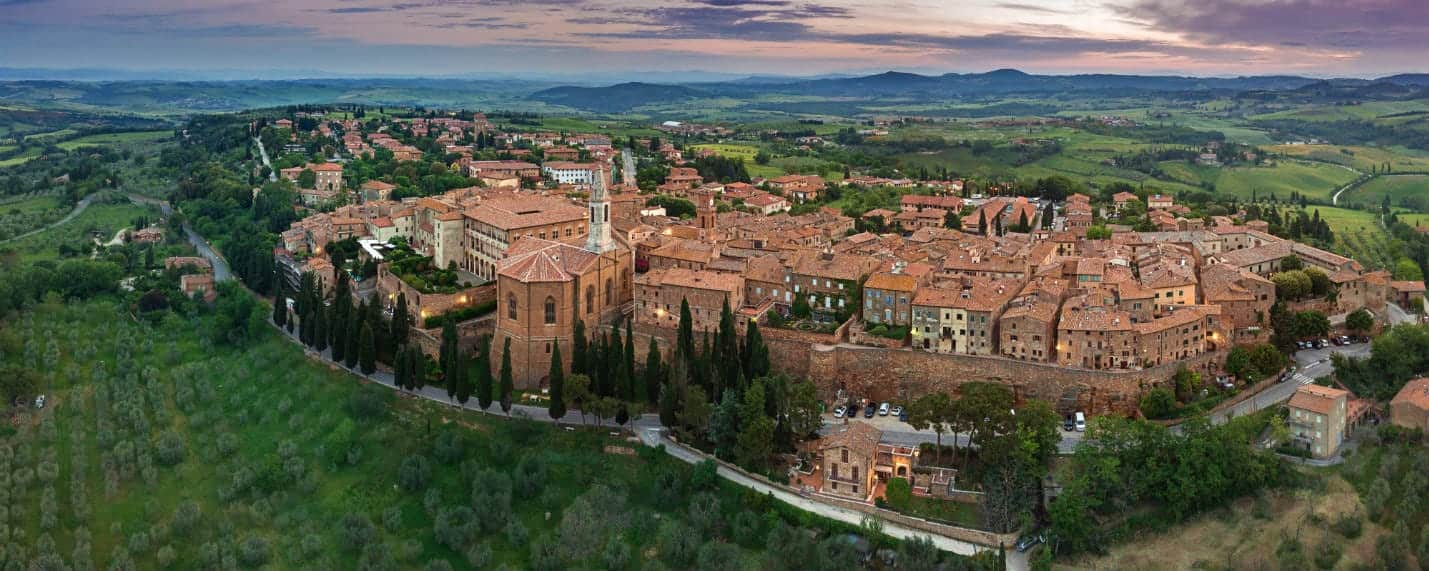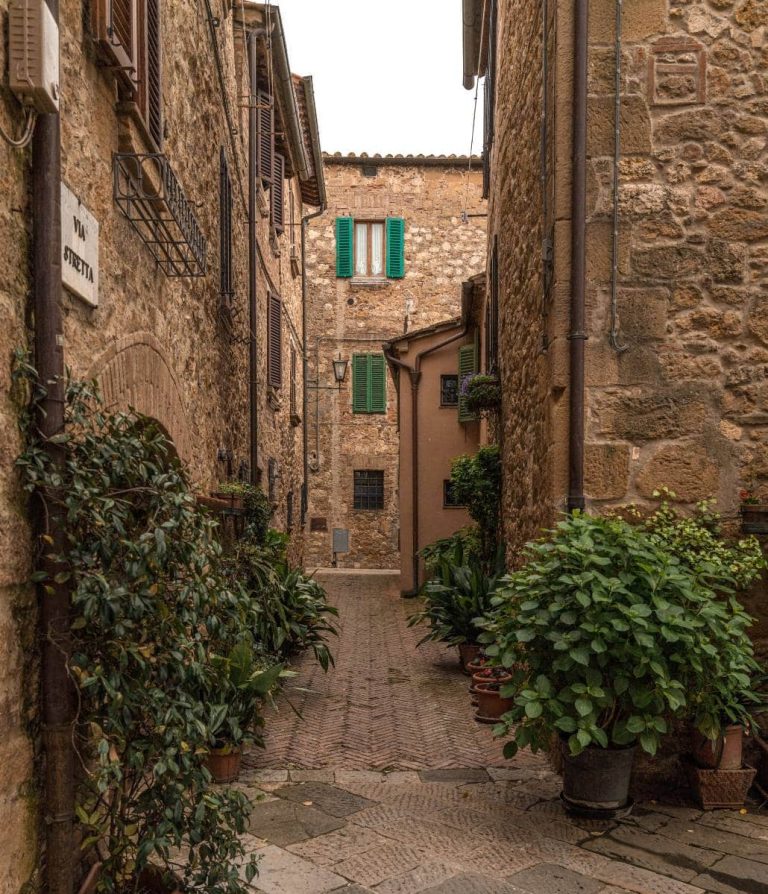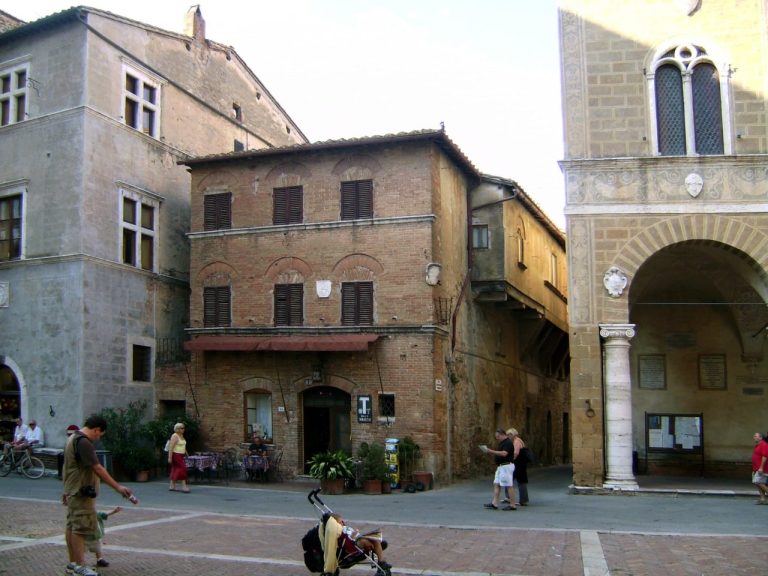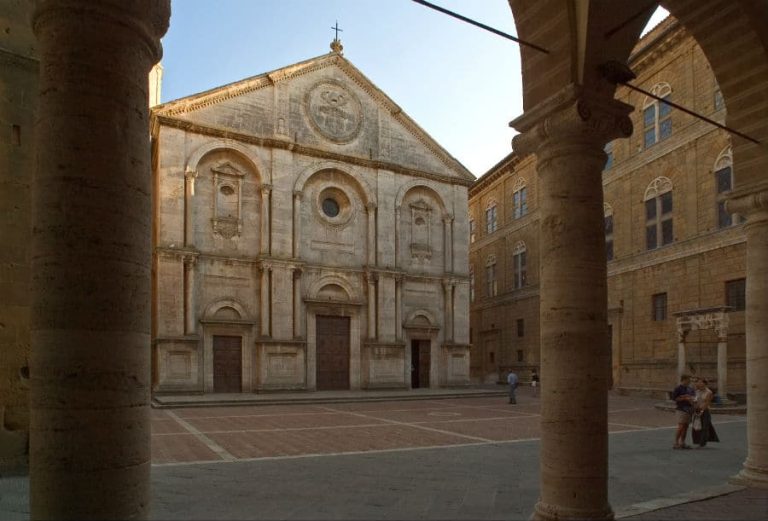Pienza, magnificently overlooking the Val d'Orcia, is a village that offers an authentic immersion in Renaissance artistic and architectural history. Recognized as a UNESCO World Heritage Site since 1996, this Tuscan gem represents the ideal 15th-century city, thanks to the grandiose designs of Pope Pius II and the mastery of architect Bernardo Rossellino.
Founded as the small village of Corsignano, the town saw a radical change in 1462, following the decision of Enea Silvio Piccolomini, who became Pope Pius II, to transform its birthplace into an ideal Renaissance city. The ensuing redevelopment lasted four years, during which time the urbanistic configuration of Pienza emerged in all its harmony, still distinguished by its typically 15th-century features.
The beating heart of the city is Piazza Pio II, scene since 1960 of the characteristic Palio del Cacio a fuso, and home to major architectural treasures such as the Renaissance Cathedral, the Palazzo Comunale, Palazzo Borgia and Palazzo Piccolomini. Also near Pienza is the Romitorio, a set of rooms carved out of sandstone by hermit monks, particularly noted for its sculpture of a Madonna with six fingers.
Walking the streets of Pienza also means visiting the Duomo, the Cathedral of the Assumption, and admiring its spectacular octagonal bell tower erected over the ancient crypt. Inside, the Duomo holds important works of art by famous artists of the time.
Opposite the Duomo, stands the Palazzo Comunale, a historic building from the 1400s featuring a showy loggia. In the same square, you cannot fail to visit the Piccolomini Museum-Palazzo Piccolomini, with its striking roof garden that offers a breathtaking view of the Val d'Orcia, from Montalcino to Mount Amiata. In the same complex, there is also the Palazzo Borgia, current home of the Diocesan Museum of Pienza.
Inside the former conservatory of San Carlo, it houses the Archaeological Museum of Pienza, a medieval building that has extensive archaeological and Etruscan collections, as well as an exhibition itinerary documenting the urban and architectural history of the Pienza area.
Not far from the historic center, you can discover the Pieve di Corsignano, a Romanesque church with three naves, which dates back to the 7th century.
The trip to Pienza cannot end without a food and wine stop. This area is famous for its typical products such as Pienza pecorino cheese, saffron, fine truffles, Cinta Senese cold cuts and pici, a typical pasta served with garlic sauce or goose ragout. All dishes can be accompanied by excellent local wines, such as Brunello di Montalcino, Rosso di Montalcino and Orcia Doc.
Visit Pienza, the Val d'Orcia's most renowned and most important artistic hub, and be captivated by its unique Renaissance beauty.

















